By Ihsaan Yasin
Earlier this year, I had the pleasure of talking to a VC at a fireside chat. Of all the advice they gave me about researching, founding, and investing, they emphasized one key statement: Find a company that gives you the opportunity to learn company building. That stuck with me, because I went into this game thinking the only way to do that was to start a company. Deciding to humbly lower my head and take a pause on my own venture, I joined Courier Health, a series A stage startup, as a Software Engineering Intern.
FINDING AN ENVIRONMENT THAT LETS YOU LEARN “COMPANY BUILDING”
The term “company building” encompasses such a wide range of company stages such that we must specify. For me, this environment was Series A. I’ve spent some time working on research and validation earlier in the year, and while I’m no means an expert, I got the sense that I wanted to learn more about the other aspects of a company, and not just in engineering, but all across the board. Courier Health as a Series A startup was a naturally perfect fit.
Another important factor with Courier Health was that it was a fully in person company. As much as I love remote work, watching the battlefield is no substitute for entering and participating in the chaos. At CH, I was a whopping 4 feet away from my exec team. It may not seem big, but just being around everyone and hearing their conversations, oftentimes chiming in, was instrumental in helping me better learn “Company building”. So what did I learn?
CULTURE IS HUGE, AND IT’S ONLY AS GOOD AS YOU WANT IT TO BE
People think culture is hard, and it can be. At a startup, culture is derived completely from the exec team, and more specifically the founder. There were many instances where we held events, dinners, and more. I often pondered as to why we did so much team building? While it was important, surely it couldn’t be worth that much? I was completely wrong. If I look back and consider why I was never nervous to ask questions, why our team made so many quick strides and was so quick to adapt, it wasn’t solely due to everyone’s strong communication skills. It was the company culture and how tight knit the company was that allowed us all to be on our A game. There weren’t strict check-ins, scary reviews, and micro-management. When the culture is open and free, you give your employees the chance to grow into their roles, take ownership, and maintain seamless teamwork!
NEVER STOP THINKING ABOUT PRODUCT FIT
Something I heard in nearly every meeting at Courier Health was the importance of maintaining a close connection with our customers and continuously assessing our product-market fit. This wasn’t just lip service; it was embedded into our daily routines. Even at the Series A stage, where the product is more developed and the company is starting to scale, the need to align with the market’s demands and to be flexible in response to customer feedback was paramount. This was a significant learning for me. I realized that no matter how established a product seems, it’s crucial to keep testing assumptions, iterating, and listening to what the market and users are telling you. This constant vigilance ensures that the product remains relevant and continues to solve the right problems for the right audience.
IT’S OKAY TO SAY ‘NO’
One of the most valuable lessons I learned during my time at Courier Health was the power of saying “no.” As a startup, the desire to be all things to all people can be tempting. However, the ability to prioritize and focus on what really matters is what separates successful companies from those that burn out trying to do too much. Our leadership was not afraid to pass on opportunities or features that didn’t align with our core mission or that stretched our resources too thin. This discipline allowed us to maintain clarity of purpose and to direct our energies toward initiatives that would have the most significant impact. It’s a lesson I’ll carry with me in all future endeavors—knowing when to say no is just as important as knowing when to say yes.
THE TECH DEBT FALLACY
Another common discussion at Courier Health revolved around managing tech debt. The common fallacy is that tech debt is something to be avoided at all costs. However, I learned that tech debt, when managed well, can actually be a strategic tool. The key is to be intentional about it. For instance, there were times when we chose to incur tech debt to move faster and seize a market opportunity. The lesson here is that not all debt is bad—it’s about balancing short-term gains with long-term stability. Being at a Series A startup taught me that some level of tech debt is almost inevitable as you scale rapidly, but what’s critical is having a plan to manage and pay it down as you grow.
PRODUCT REVIEW CYCLES
Regular product review cycles were another eye-opener for me. I had previously underestimated the value of frequent, structured reviews of the product’s progress. At Courier Health, these reviews were not just about checking boxes—they were deep dives that allowed us to reassess priorities, adapt to new information, and refine our product strategy. These cycles ensured that we stayed agile and responsive, keeping the entire team aligned and focused on delivering value to our users. They also fostered a culture of continuous improvement, where feedback was actively sought and used to drive the product forward.
MISSION DRIVEN
Finally, I learned that the company’s mission is not just a statement on a wall—it’s a guiding principle that influences every decision. At Courier Health, our mission to improve patient outcomes in healthcare was at the core of everything we did. Whether we were discussing new features, partnerships, or growth strategies, the mission provided a North Star that helped guide our decisions and ensured we stayed true to our purpose. This alignment around a shared mission not only motivated the team but also made our work more meaningful and impactful. It’s a reminder that while profits and growth are important, having a strong, clear mission is what gives a company its soul and sustains it through the inevitable challenges of building a business.

